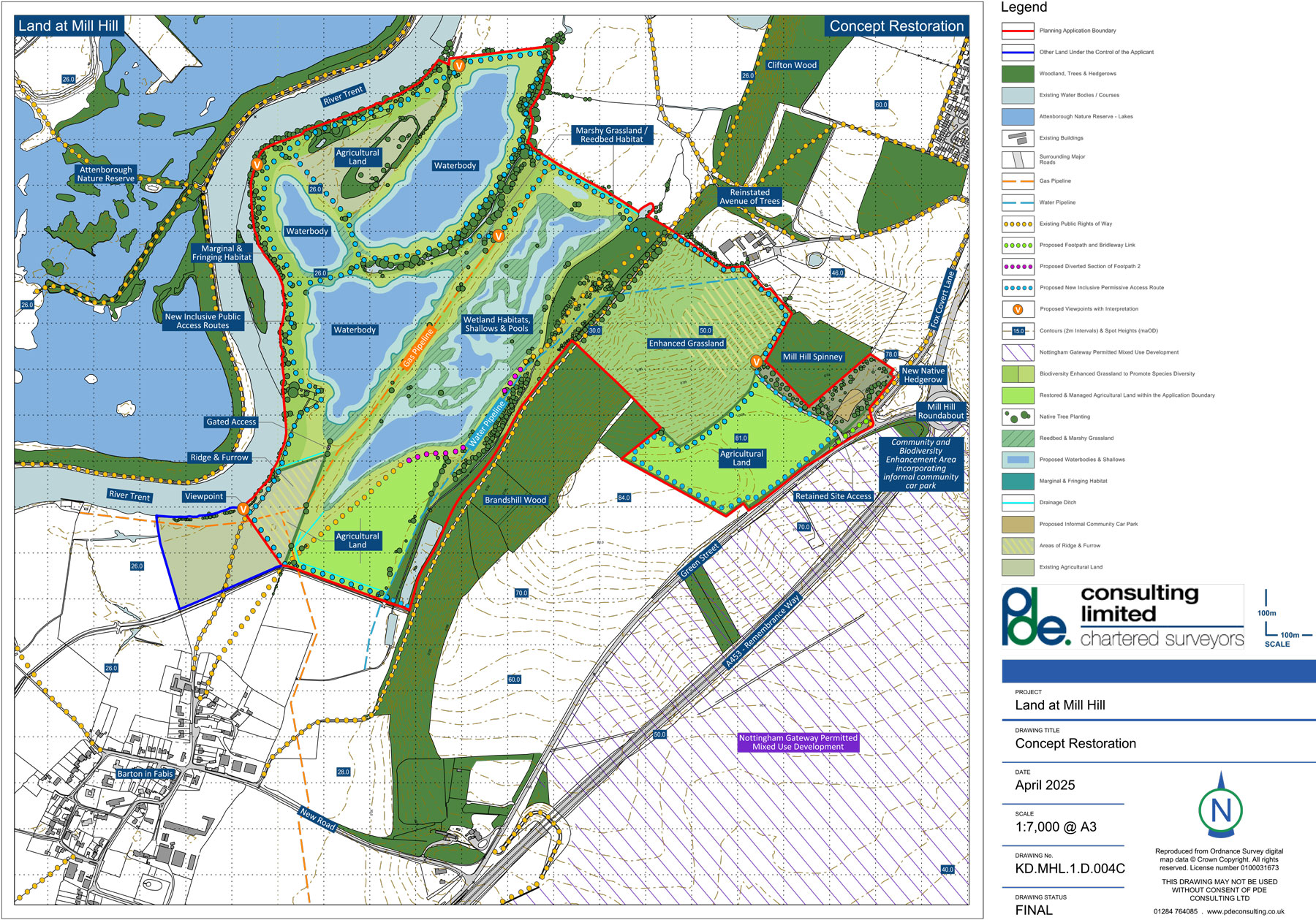Quarrying is widely recognised as one of the few activities that enables the restoration of landscapes that have been worked and farmed by our ancestors. Indeed, more new nature reserves, wildlife habitats and country parks are created from restored quarries than any other land use.
This is evidenced in detail in the Mineral Products Association (MPA) document Quarries & Nature: A 50 year success story which features numerous examples around the country including along the Trent Valley.
Watch the MPA film about Quarries and Nature, featuring senior representatives from Natural England, The Wildlife Trusts, RSPB and the Bumblebee Conservation Trust.
Biodiversity Net Gain
The restoration plan for the proposed quarry at Mill Hill, developed in consultation with local authorities and conservation organisations, details how the site will be restored and cared for once quarrying activities are complete.
The restoration plan will create habitats of equal or higher value than the existing habitats on the site. There will be additional ponds, lakes, associated wetland, species-rich grassland, fen and hedgerows created, in addition to a significant area of arable farmland. This will significantly enhance the existing habitats within the site by creating links between them, as well as complementing other habitats in the surrounding landscape.
A full Biodiversity Net Gain (BNG) calculation indicates that with the habitat retention, enhancement and creation following the final quarry restoration, the development would provide 504.95 habitat units and 19.03 hedgerow units. That equates to a net gain in habitat units of 130.38 (34.81%) and a net gain in hedgerow units of 3.67 (23.86%).
NOTE: In designing what is considered to be the best combination of habitats to promote the optimum Biodiversity Net Gain, the proximity of East Midlands Airport means we are obliged to balance habitats so as not to encourage the potential for additional risk of aircraft coming into contact with certain bird species.
Further details on how this will be achieved is covered in our Biodiversity Net Gain Report.
Social Net Gain
In addition to delivering biodiversity net gain, the restoration also seeks to provide social net gain and this is proposed to be achieved through the creation of the following:
- An informal community car park will be created to the north east of the plant site
- A permissive route is proposed which will provide a link to wetlands across Brandshill Grassland to connect with Bridleway 3
- Approximately 7.7 km of new permissive access routes will be established within the site, which will be available for use by the public.
Ultimately, the restored site will significantly improve access and connectivity, enabling a broader group of people to be able to access this unique stretch of the Trent Valley.
Long-term aftercare
We are committed to a long-term restoration and aftercare scheme at the site which could be secured via planning conditions. This would ensure that the new landscape continues to thrive and delivers a long-term legacy of biodiversity and social net gain.
